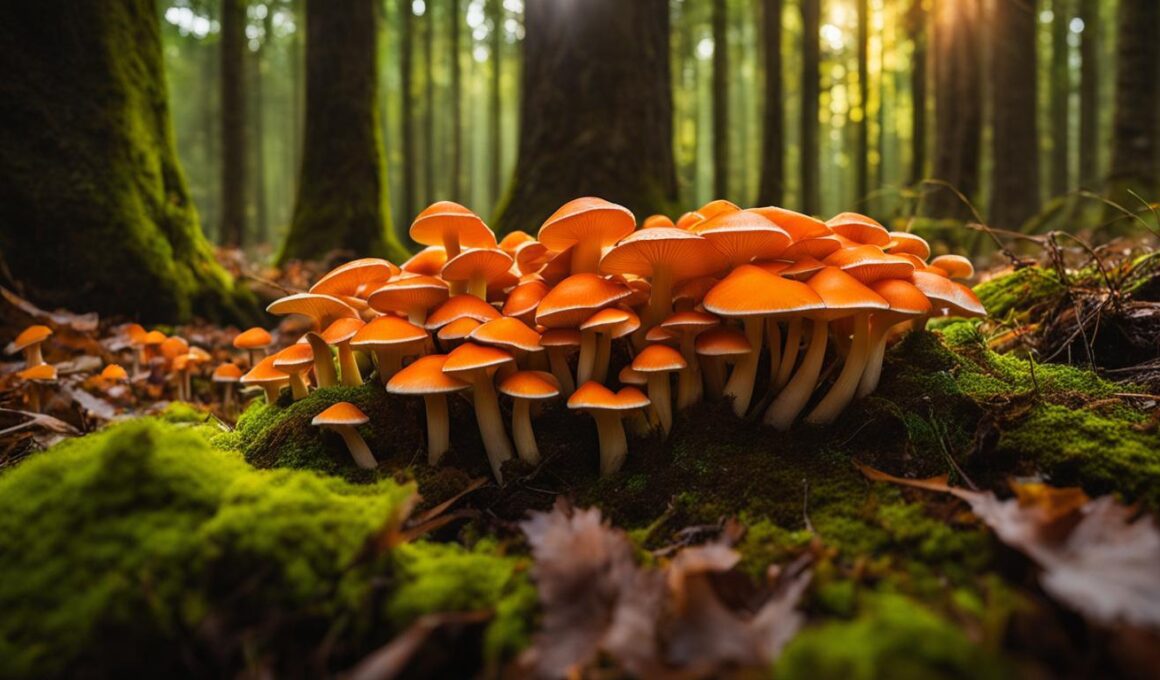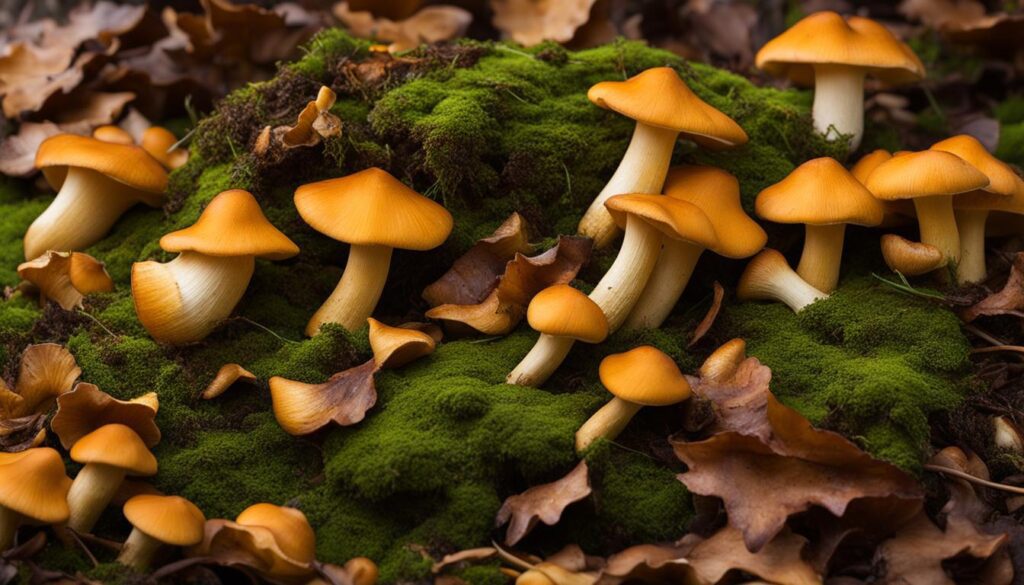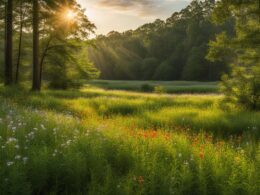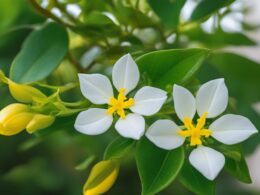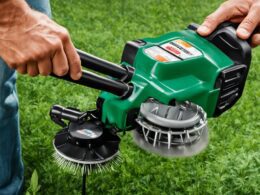Welcome to the ultimate guide for foraging edible mushrooms in Florida! If you’re a nature enthusiast and love exploring the wonders of the wild, Florida offers a diverse array of edible mushrooms just waiting to be discovered. In this comprehensive guide, we will introduce you to the fascinating world of edible mushrooms found in the Sunshine State.
With approximately 270 species of edible mushrooms, Florida boasts a rich variety that can excite your taste buds and add a unique touch to your culinary adventures. However, it’s crucial to develop proper identification skills to differentiate between safe and toxic mushrooms. This forager’s guide will equip you with the knowledge you need to confidently explore the edible mushrooms in Florida’s lush forests and landscapes.
Throughout this guide, we will delve into the identification process, highlighting key factors to consider when distinguishing edible mushrooms from their toxic counterparts. We’ll discuss the various characteristics of caps, undersides, stems, and the presence of any look-alikes that may pose a risk.
So, whether you’re a seasoned forager or an adventurous beginner, this guide will serve as your go-to resource for identifying and enjoying the bountiful edible mushrooms of Florida. Let’s embark on this exciting journey together and discover the hidden treasures that nature has to offer.
Identifying Edible Mushrooms in Florida
When it comes to identifying edible mushrooms in Florida, there are several key factors that you should consider. By paying attention to these factors, you can safely enjoy the bountiful variety of mushrooms that the state has to offer.
1. Season: The season in which mushrooms can be found plays a crucial role in identification. Different species have specific growing seasons, so familiarize yourself with the times of the year when certain mushrooms are most likely to appear.
2. Cap and Underside: Take a close look at the cap and underside of the mushroom. Pay attention to the color, texture, and any distinguishing features. Some mushrooms have distinct gills or pores on the underside, while others may have a smooth surface.
3. Stem: The stem of a mushroom can provide important clues for identification. Notice its height, thickness, and any unique characteristics such as a ring or a bulbous base.
4. Toxic Look-Alikes: It is essential to be aware of any toxic look-alike mushrooms that may resemble the edible ones you are searching for. Identifying these look-alikes is crucial for avoiding dangerous mistakes. Always consult with local experts or seasoned foragers to learn about potential look-alike species in your area.
Remember, caution is key when it comes to identifying edible mushrooms. Never solely rely on online pictures for identification, as they can be misleading. Consulting with knowledgeable local foragers or mycologists is highly recommended.
Popular Edible Mushrooms in Florida
Florida is home to a variety of popular edible mushrooms. Whether you’re an avid forager or just starting out, exploring these delicious fungi can be a thrilling and rewarding experience. Let’s dive into some of the most sought-after edible mushrooms you can find in the sunshine state.
The King Bolete
The King Bolete is a prized find among foragers. Its dense-fleshed cap, without gills, makes it easily identifiable. The underside of the cap has a sponge-like texture. The King Bolete is known for its rich flavor and versatility in culinary preparations.
Chanterelles
Chanterelles are a favorite among mushroom enthusiasts for their distinct funnel-shaped cap. They have forked ridges on the underside, distinguishing them from other mushroom varieties. These vibrant orange mushrooms offer a delicate and fruity flavor that adds depth to various dishes.
Chicken of the Woods
A true gem of the forest, Chicken of the Woods is named for its chicken-like taste and texture. Growing in overlapping shelves on dead or dying hardwood trees, these bright orange or yellow mushrooms are a fantastic addition to vegetarian and vegan recipes.
Indigo Milk-Caps
Indigo Milk-Caps are easily recognized by their convex cap with a central depression and pale blue gills. These mushrooms exude a milky white latex when cut or damaged. They boast a mild and nutty flavor, making them a popular choice for sautés and soups.
Common Puffballs
Common Puffballs are spherical mushrooms found in fair rings. Their white, round caps with spines or warts make them distinctive. When mature, they release a cloud of spores when touched or stepped on. These mushrooms have a firm texture and a mild, earthy flavor.
- The King Bolete: Dense-fleshed cap and sponge-like underside
- Chanterelles: Funnel-shaped cap and forked ridges
- Chicken of the Woods: Chicken-like taste, grows on dead hardwood trees
- Indigo Milk-Caps: Convex cap with blue gills and milky latex
- Common Puffballs: Spherical mushrooms with spines or warts
Remember, when foraging for mushrooms, always prioritize safety and proper identification. It’s advisable to consult with local experts or join a mycological society to learn more about Florida’s diverse edible fungi. Happy hunting!
Conclusion
Foraging for edible mushrooms in Florida can be a rewarding and exhilarating adventure. However, it is crucial to develop proper identification skills and seek guidance from local experts to ensure your safety. By following guidelines for identifying mushrooms and familiarizing yourself with specific edible varieties, you can embark on a culinary journey through the diverse world of edible mushrooms in Florida.
Remember, caution is key in mushroom foraging. Always cook wild mushrooms thoroughly before consuming to eliminate any potential toxins or bacteria. It is also essential to never eat mushrooms that you cannot confidently identify, as there are poisonous look-alikes that can have adverse effects on your health.
So put on your walking shoes, gather your mushroom identification guide, and embrace the natural wonders Florida has to offer. With a little knowledge and careful observation, you can indulge in the delights of foraging for edible mushrooms, savoring their unique flavors while appreciating the beauty of the state’s ecosystems. Happy foraging!
Are Yellow Mushrooms in Florida Safe to Eat?
It’s vital to know yellow mushroom care tips before foraging in Florida. While some yellow mushrooms are safe to eat, others can be toxic. Always positively identify the species before consuming and consult an expert if unsure. When in doubt, it’s best to avoid eating wild mushrooms altogether.





